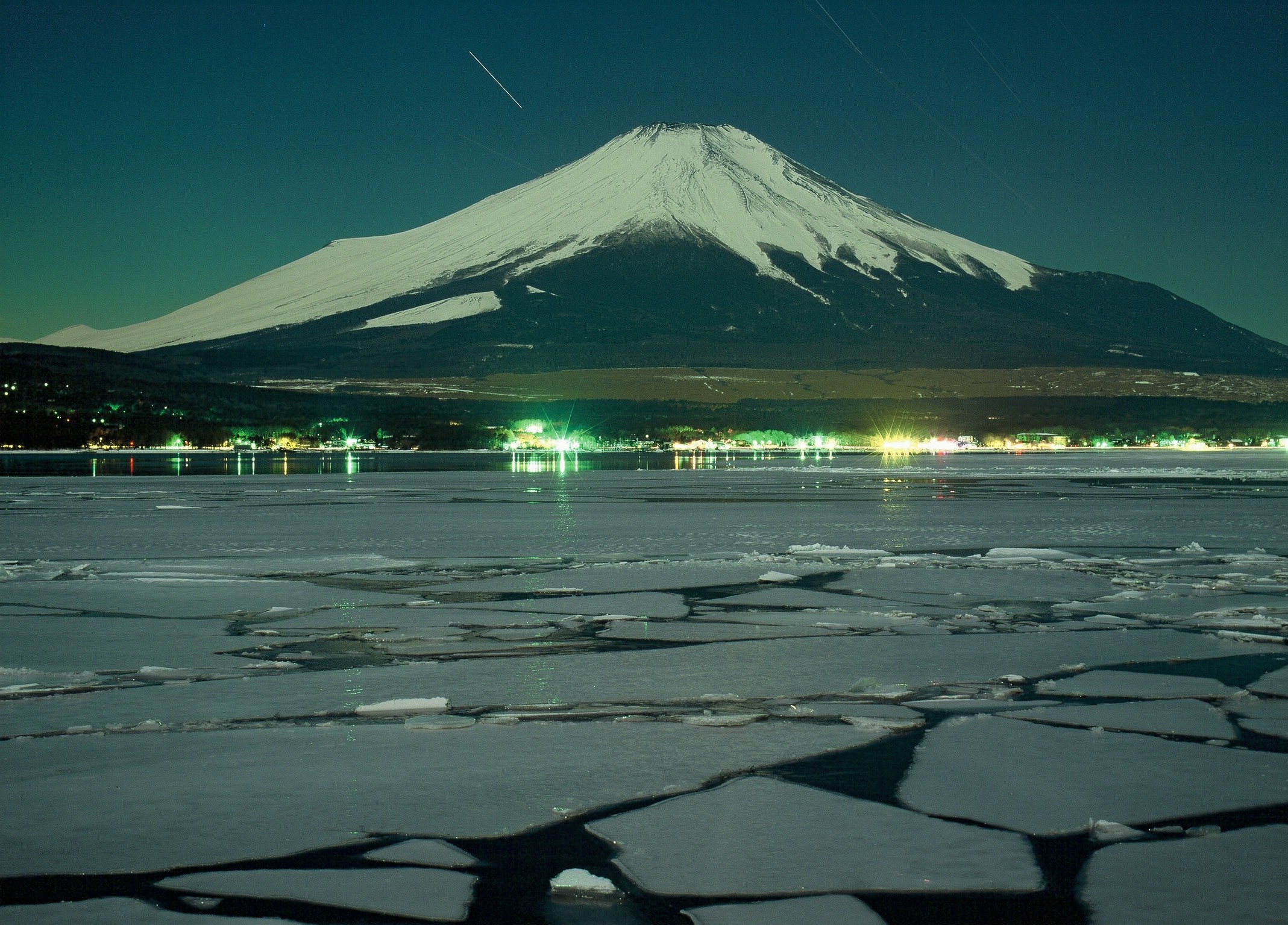1、Cape Moon (Lover’s Point; January)
<Hasselblad 503cw sonnar CF150/4 F5,6 12min FUJI RVP50>
The different images of Mt. Fuji that can be seen from the Izu area share a common beauty that comes from the mountain’s appearance that encompasses the sea, mountains and towns.
This particular scene emerges at the shores of Nishi-Izu on a night of the full-moon after Daikan, the coldest time of year.
The elegant beauty of the foothills spreads before your eyes, while the ebb and flow of the ocean tide keeps an orderly rhythm.
The crisp winter air pervades the scene and reminds us of how silent it is.
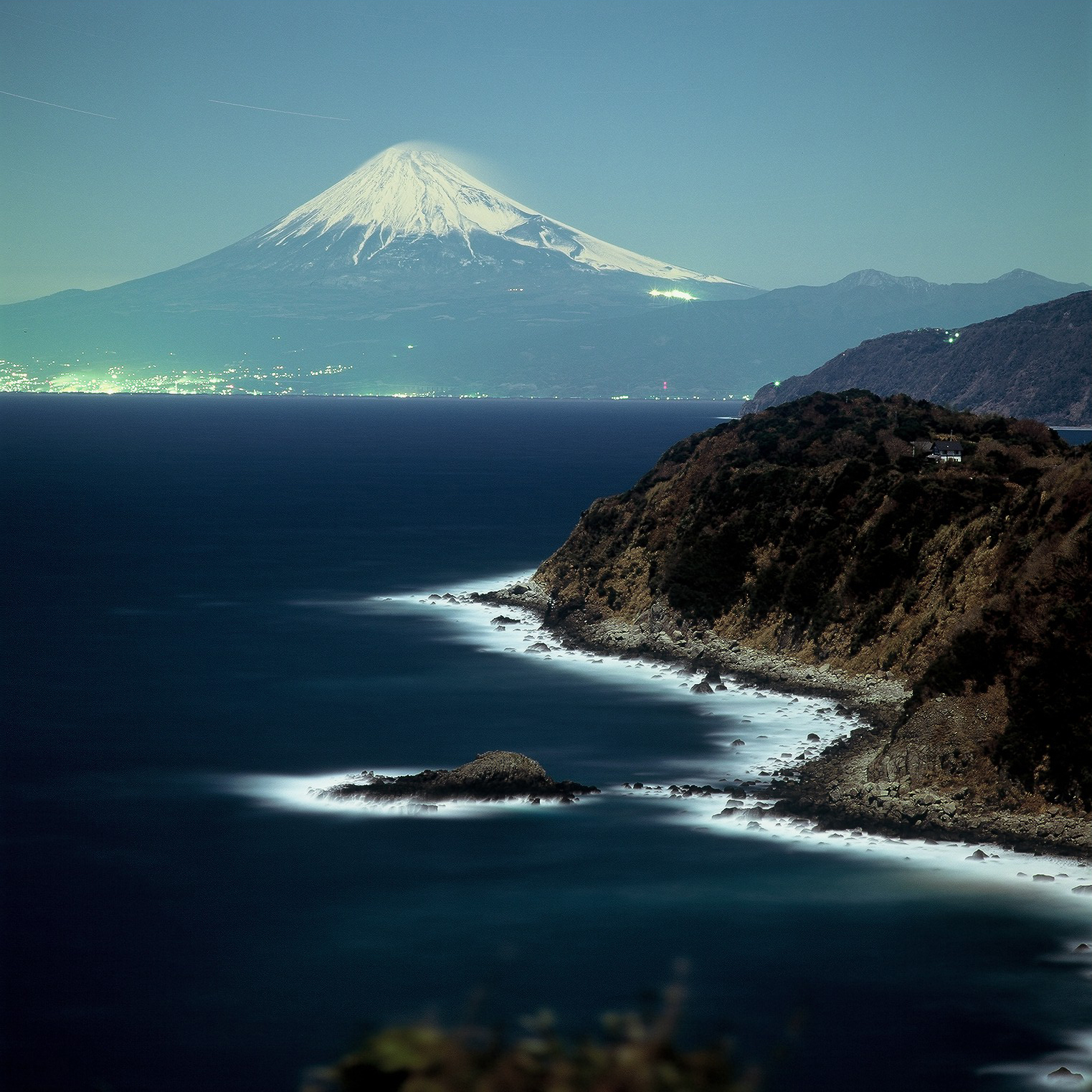
2、Frozen (Lake Yamanaka; February)
<Hasselblad 503cw Planar CFE 80/2,8 F8 16min FUJI RVP50>
This was the second time in 22 years that Lake Yamanaka had frozen over.
After so many days of bitter cold with the temperature plummeting below minus 20°C, the lake became covered with a thick layer of ice of more than 20cm.
The ice finally softened a bit towards the end of February, broke up, drifted to the shores and, having nowhere to go, piled up in heaps.
The cross-section of the ice shone under the full moon like crystals with a mysterious power.
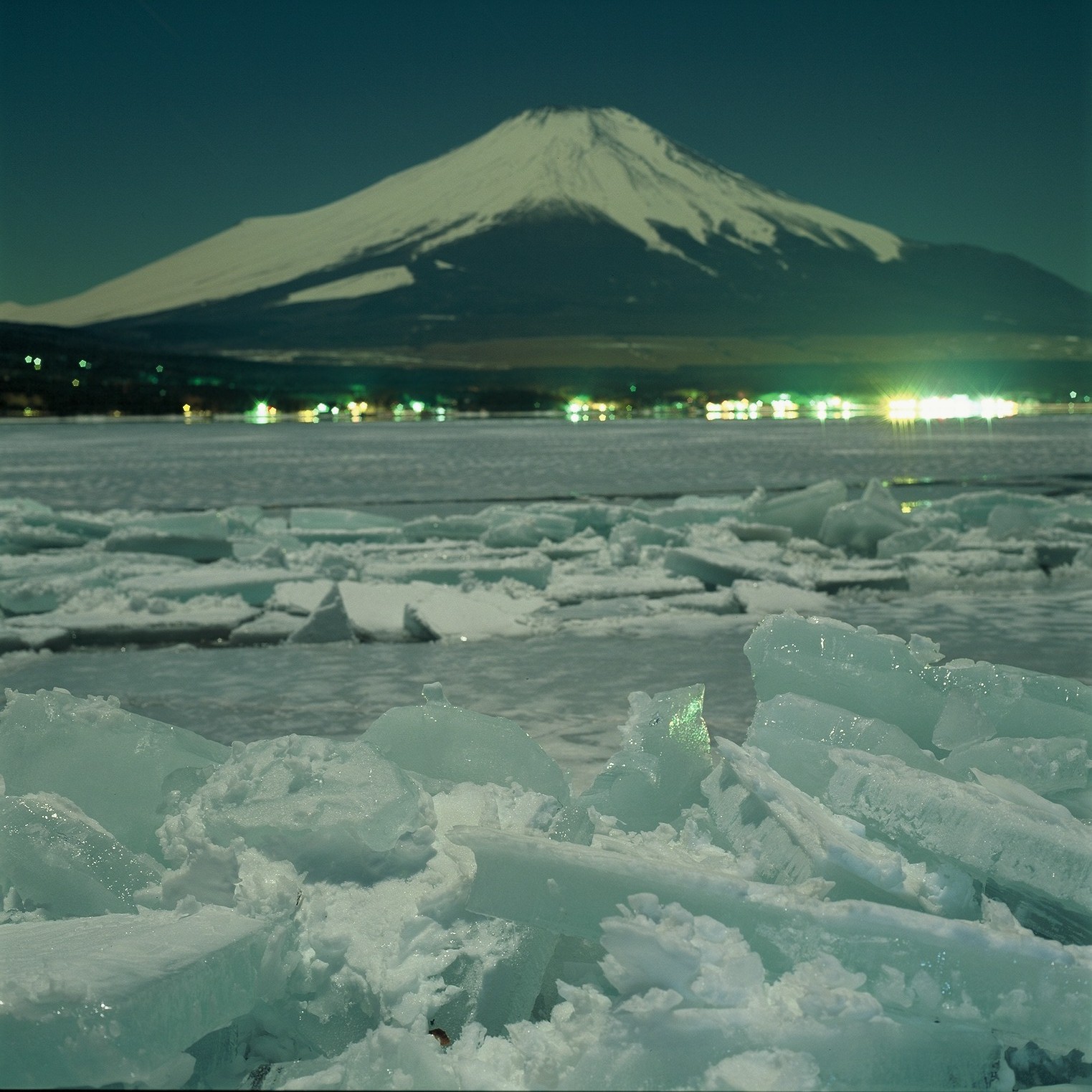
3、Cape of the Seaway (Kumomihama; February)
<Pentax645NⅡ Planar CFE 80/2,8 F5,6 12min FUJI RVP50>
At the southern shore of Matsuzaki, the Ushitsuki-iwa rock at Kumomihama is famous for its picturesque beauty, particularly when placed in the foreground of Mt. Fuji.
When I was taking pictures under the moonlight at Senganmon, I was surprised how the moonlight would seep into the surface of the rock and vividly portray the beauty of its figure. Since then, I became more interested in taking nighttime pictures at Kumoihama, where I could get a closer shot of the rock’s surface. I planned my shoot on a night with a full moon in mid-winter. My chance would come during the one hour that starts when the moonlight begins to shine on Ushitsuki-iwa and ends when the moon crosses the meridian. The best situation occurs when the sea starts to calm down after some rough weather earlier in the evening. A perfectly calm sea without white crests on the waves results in a picture lacking liveliness. That night, the wind was stronger than I expected and was blowing sprays off the waves. The pale snow on Mt. Fuji under the night sky was the only guide I in deciding the composition of my picture. I could hardly see the snow through the viewfinder as my glasses became clouded with the sprays of sea water. On that rough night, my intuition was the only thing I could rely on.
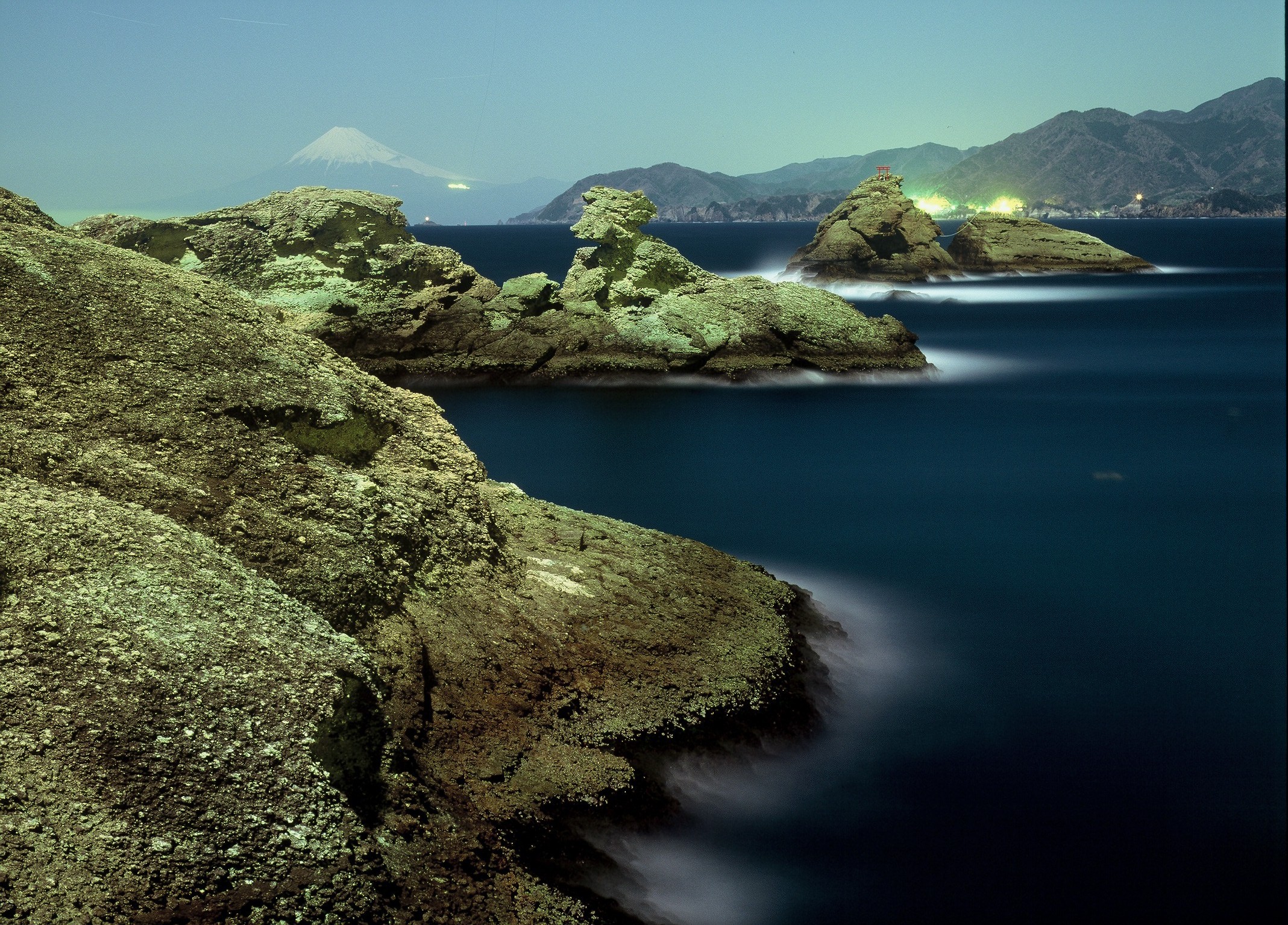
4、 Tsukikoyoi (Lake Yamanaka; September)
<Nikon D800E Distagon 2/35 ZF.2 F4 2sec Digital >
“Tsukikoyoi” (literally, “the moon tonight”) is a kigo (i.e. season word used in haiku) that means harvest moon.
The full moon had begun its westward descent and now, at dawn, it is illuminating the cirrocumulus clouds from behind.
The light of the moon is diffused by the rippled clouds, spreads gently over the entire sky, and underscores the transparent atmosphere.
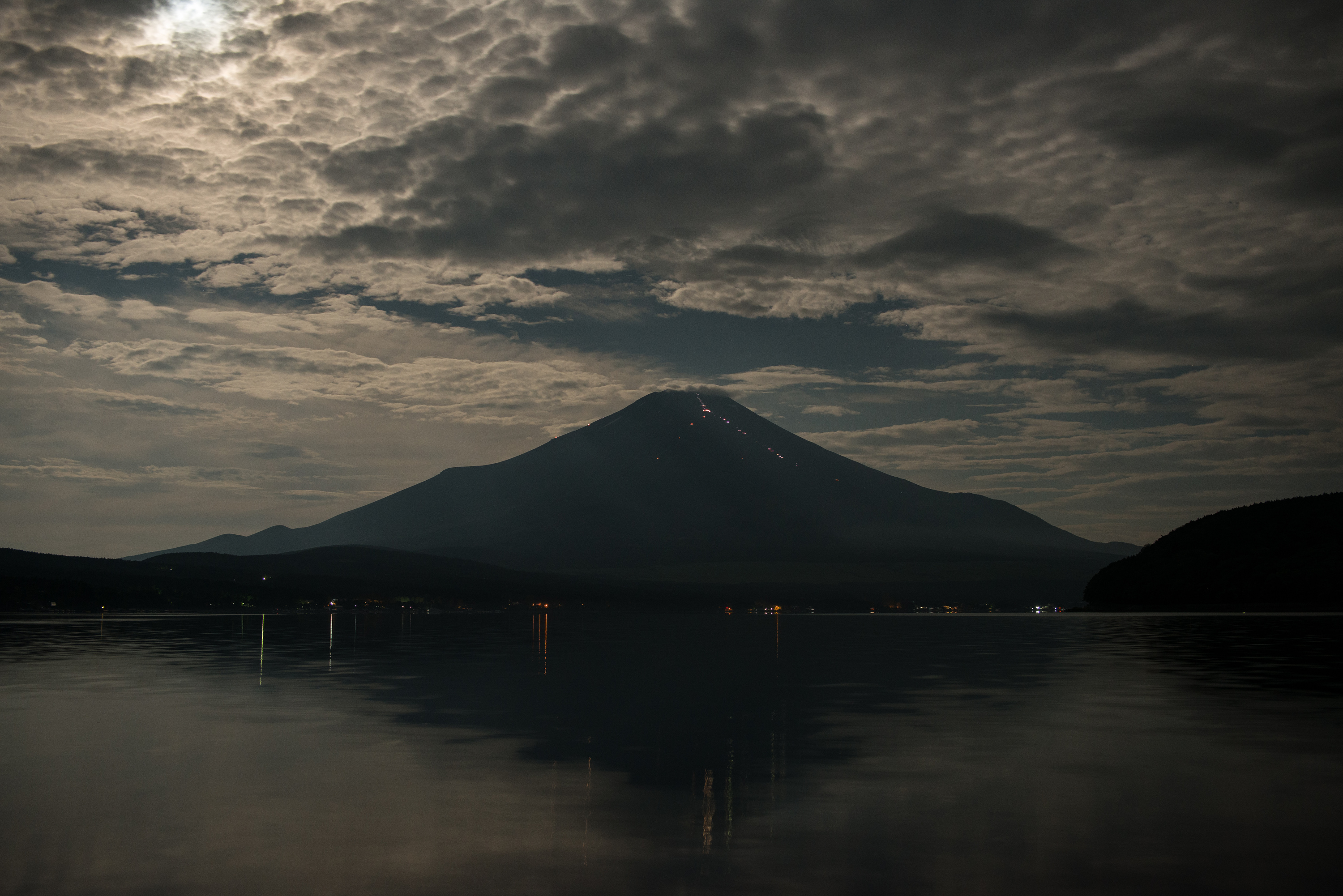
5、Sea of Clouds at Midnight
<Pentax645NⅡ FA80-160mm/F4,5 F7 12min FUJI RVP50>
In late November, thick fog forms at Lake Yamanaka and immerses the Oshino township.
Misty rain drizzle the window of my car as I drive.
A climb up a small hill brings me to a shining sea of silver clouds.
Under a starry midnight sky, the lights from the village below filter through the clouds and reveal its identity.
In the eerie silence of the dark night, the faint sound of flowing mist can be heard.
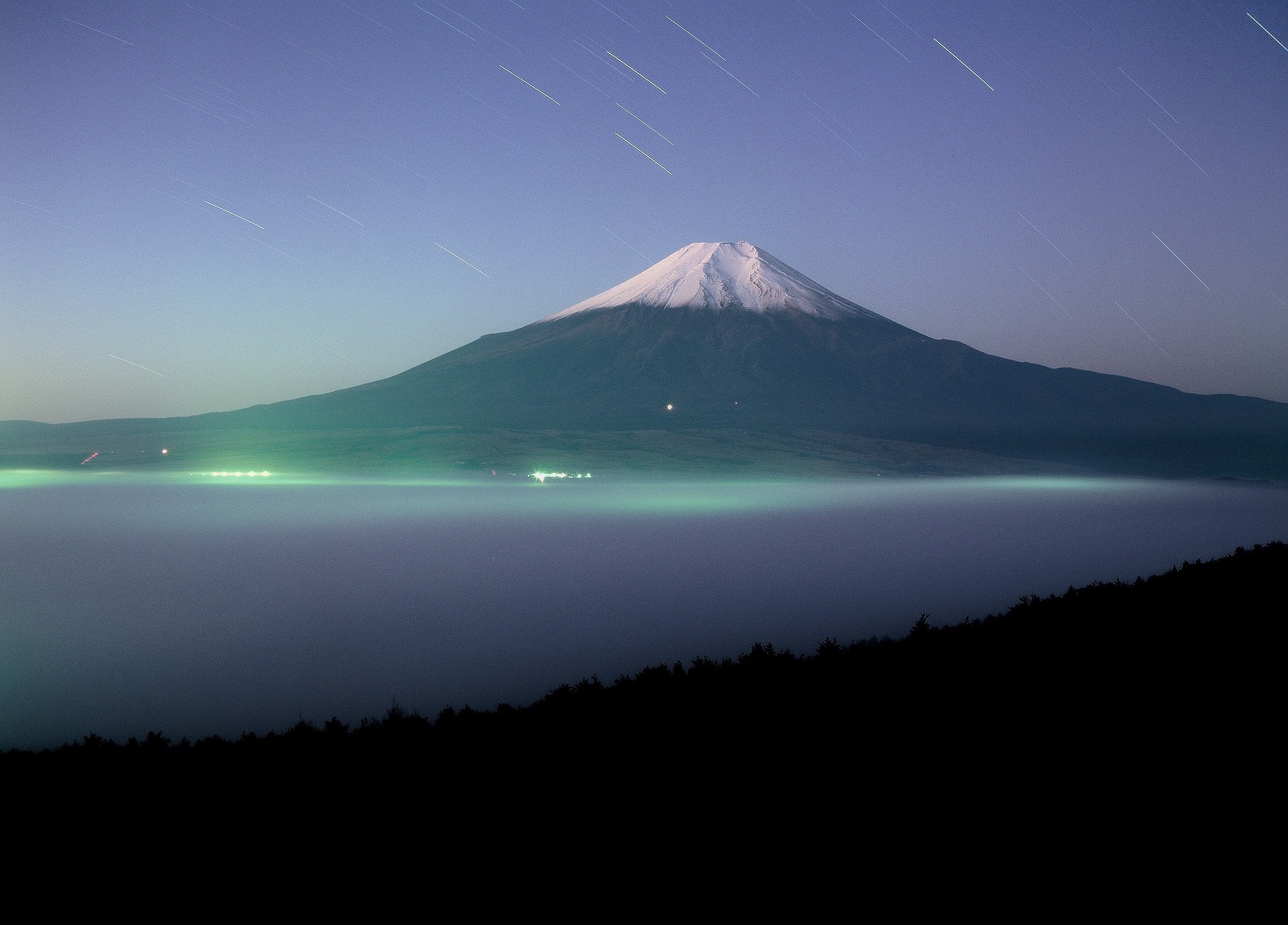
6、 Holy Night (former Nodai Farm; February)
<Hasselblad 503cw Planar CFE80/2,8 F5,6 8min FUJI RVP50>
A world of silvery white under the moonlight.
“Shepherds quake at the sight; Radiant beams from Thy holy face; Sleep in heavenly peace.”
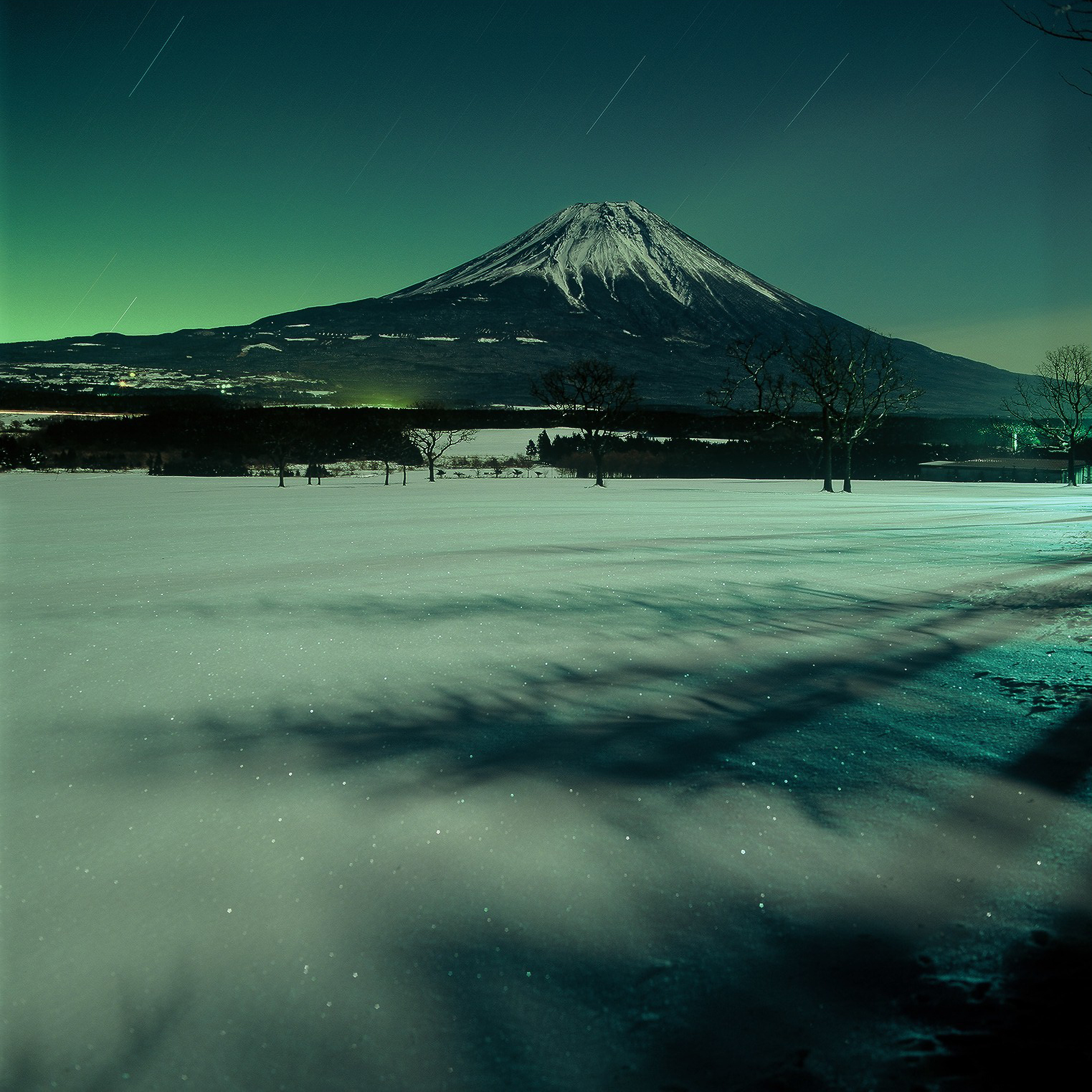
7、 Moonlight (Lake Tanuki; February)
<Nikon D800E Planar 1,4/85 ZF.2 F8 3sec Digital >
“Though no abode is spared the light of the moon, it only dwells in the heart of the gazer.”
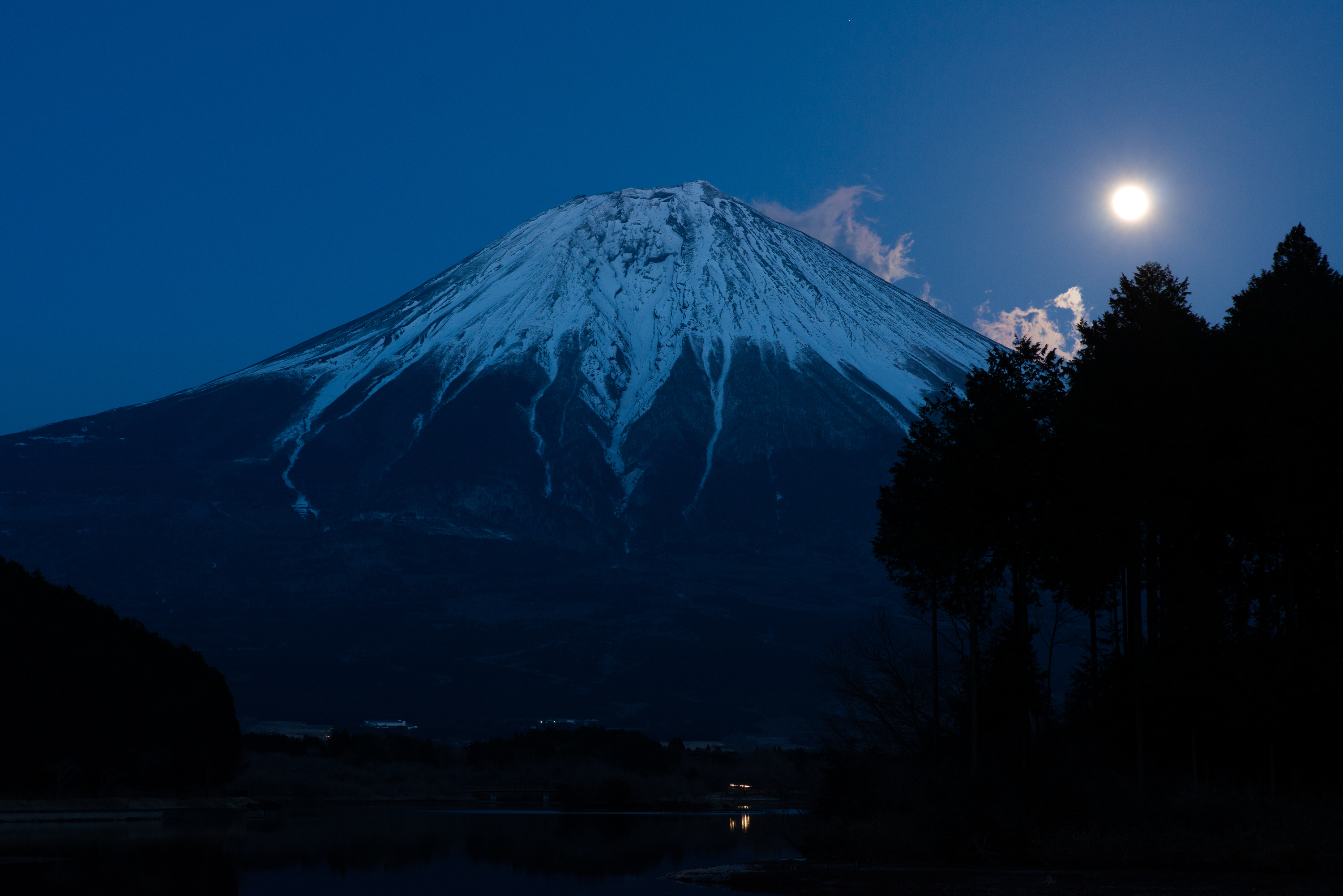
8、Ushitsuki-iwa in a Moonlit Lull (Kumomihama; January)
<Pentax645NⅡ Sonnar CF180/4 F5,6 16min FUJI RVP50>
The window of opportunity opens during the hour when the moon culminates.
The gale blowing all day has calmed by midnight.
I hang a weight on my tripod in preparation for a long-exposure shot.
The moonlight reveals the snow on Mt. Fuji.
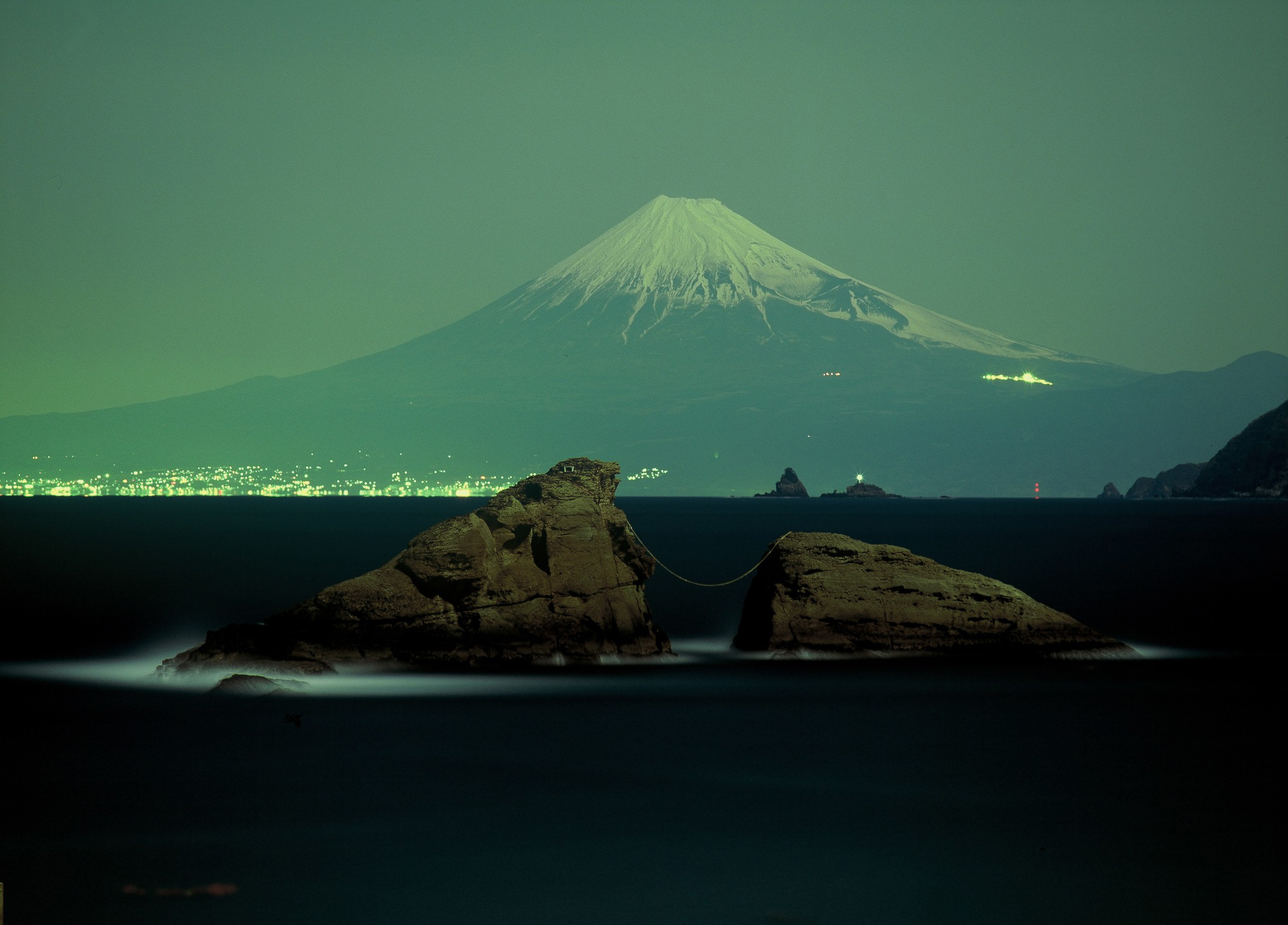
9、 Nocturne (Koganezaki; March)
<Hasselblad 503cw Distagon CF50/4 F5,6 17min FUJI RVP50>
The cliff is made of propylite, a form of rock made from the weathering of andesite. The shining gold color of the rock that appears when the sunset shines on it has become a famous sight. I have been trying to capture the colors of the cliff under the moonlight but it is an unusually warm winter and the atmosphere is not cold enough. At around 3 a.m. after a day of heavy rain, the moon that had culminated and begun its westward descent started to shine its light on the cliff. The snow on Mt. Fuji can be seen with the naked eye. “Now is my chance!” I stand on the edge of the precipice and carefully adjust the settings on my camera. The propylite shining under the moon, the murmur of the waves, the pine trees above the rocks with its green color noticeable even at night, the dark blue ocean, the crest of waves lapping the shores in the distance, the city lights, the mountains of the Southern Japan Alps, the orbit of the stars, and Mt. Fuji sitting quietly. It was like a late night performance of a nocturne on a winter day in Izu.
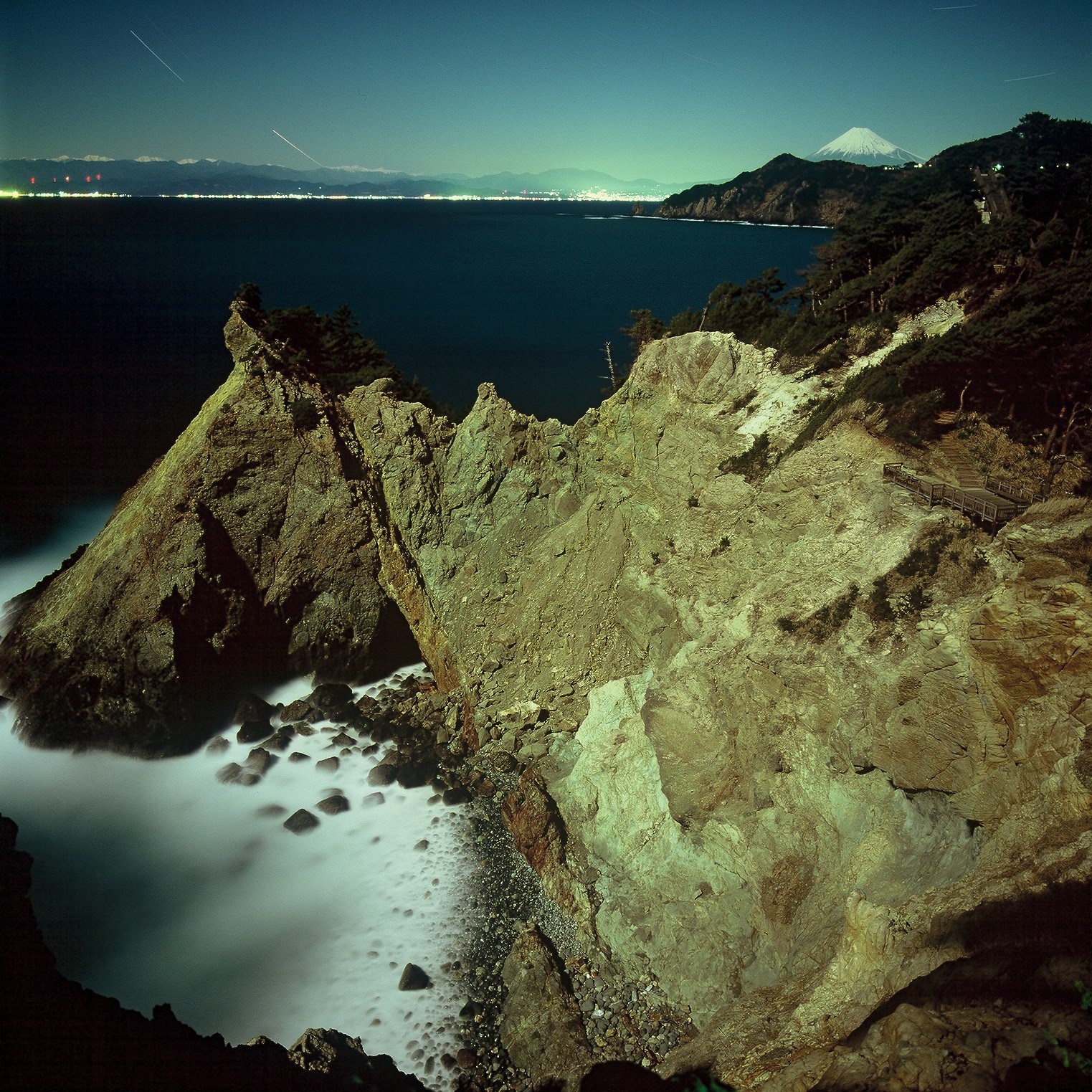
10、Lake of Moonlight
<Pentax645NⅡ Planar CFE80/2,8 F5,6 16min FUJI RVP50>
I stand by the frozen lake.
The eerie sound of creaking ice echoes in the darkness.
Dazzling lights from the lakeside pierce the eye.
Cradled in the arms of the sacred mountain, the moon-lit lake sleeps quietly.
